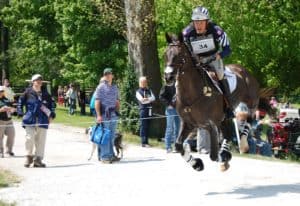
Equine Piroplasmosis in America: Re-Emergence and Control
Recent outbreaks have prompted further investigation into the re-emergence and control in the United States.


Recent outbreaks have prompted further investigation into the re-emergence and control in the United States.

Use a multidimensional treatment approach to give mares the best chance for recovery.
Two hospitalized horses have returned home after receiving treatment; a third continues to recover.

Most options can lessen the effects of estrus while still allowing mares a second career as a broodmare.
Some horses relish their retirement: They spend their days lounging in a pasture, wandering around at their own pace, and might go out for the

Sally Baker of the AAEP shares the top five things attendees can look forward to when they land in California.

Sixty-eight percent of more than 650 respondents indicated they’d cared for a vision-impaired horse.

New research is taking place, and equine deworming recommendations are rapidly changing.

Five of seven horses residing on the index farm have developed clinical signs consistent with the disease.
It’s that time of year again: The weather’s getting colder, the horses are getting fuzzy, and the holidays are right around the corner. And, here

There were few performance differences between foals born to healthy mares and those treated for placentitis.

British trainer Victor Dartnall is dealing with an outbreak of neurologic EHV-1 at his yard in North Devon.

The horses are currently being treated at the University of Minnesota Large Animal Hospital.

The goal for sport horses, from prepurchase exams through their careers, is to extend the time to retirement.

This pilot study is in preparation for a full vaccine trial, which is likely to commence in 2013 or 2014.

As of Nov. 6, the USGS indicated that the WNV and EEE totals had risen to 620 and 204, respectively.
Stay on top of the most recent Horse Health news with